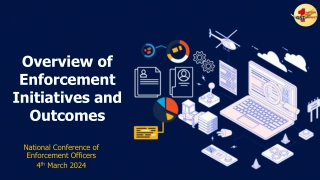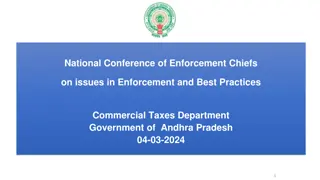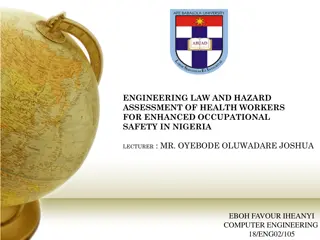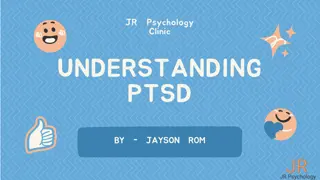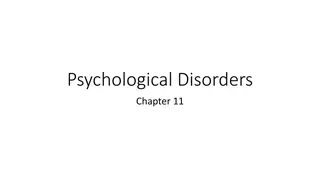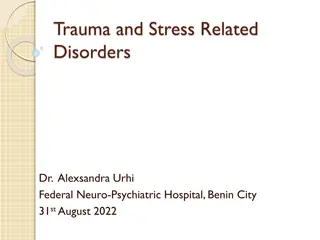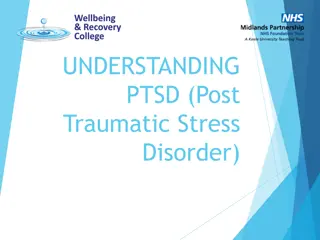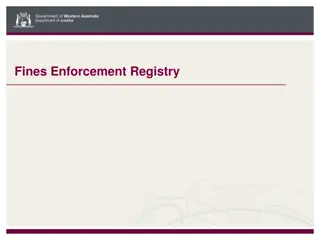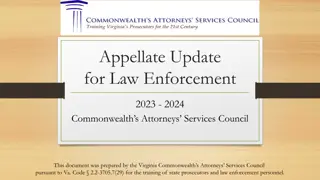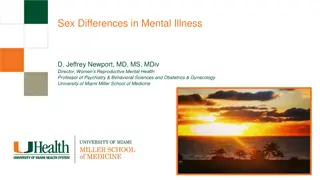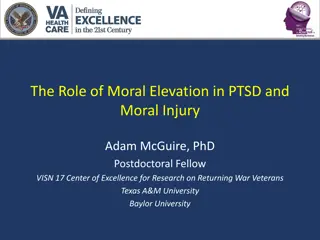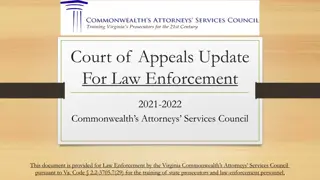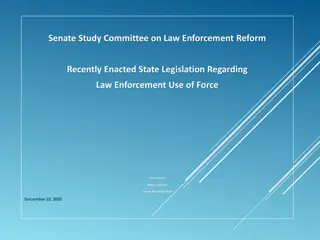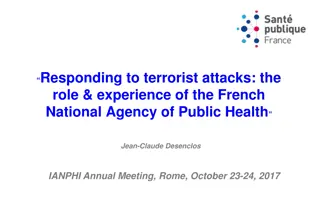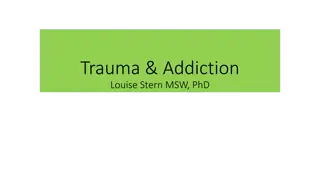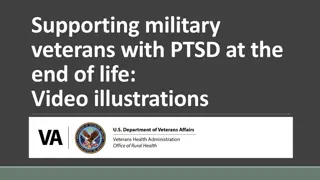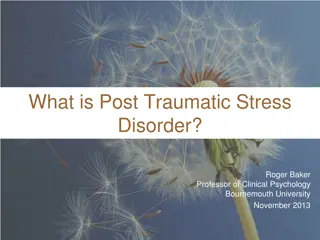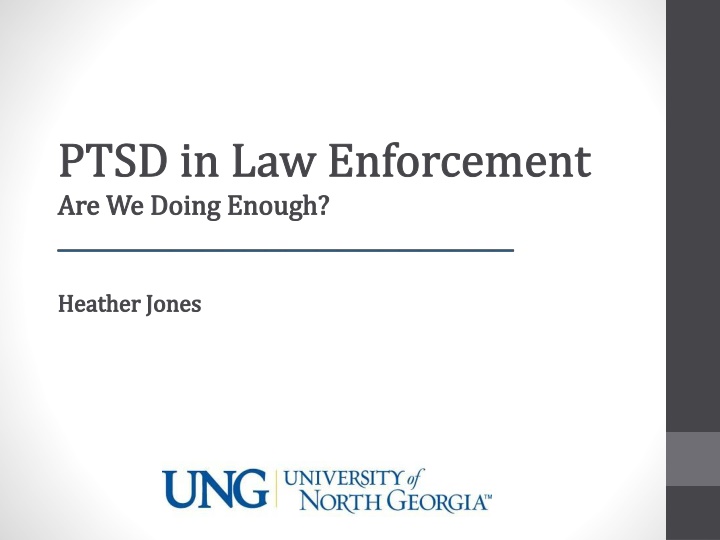
Addressing PTSD in Law Enforcement: Steps to Improve Mental Health Support
Explore the challenges faced by law enforcement officers regarding PTSD, its symptoms, historical context, current prevention and treatment methods, unique risks faced by police, and the impact of police culture on mental health. Discover the importance of enhancing mental health support for officers to mitigate the dangers of PTSD and improve overall well-being.
Download Presentation

Please find below an Image/Link to download the presentation.
The content on the website is provided AS IS for your information and personal use only. It may not be sold, licensed, or shared on other websites without obtaining consent from the author. If you encounter any issues during the download, it is possible that the publisher has removed the file from their server.
You are allowed to download the files provided on this website for personal or commercial use, subject to the condition that they are used lawfully. All files are the property of their respective owners.
The content on the website is provided AS IS for your information and personal use only. It may not be sold, licensed, or shared on other websites without obtaining consent from the author.
E N D
Presentation Transcript
PTSD in Law Enforcement Are We Doing Enough? ____________________________________________ Heather Jones
What is PTSD? Post-Traumatic Stress Disorder a severe condition that may develop after a person is exposed to one or more traumatic events, serious injury, or the threat of death.
Symptoms Reliving the event (re-experiencing) a.k.a. Flashbacks Avoiding situations that remind the patient of the event Feeling numb Feeling keyed up (hyper-arousal)
Symptoms Continued Hyper-vigilance Feelings of fear, sadness, guilt, and anger Problems sleeping Diminished coping skills Suicidal Thoughts
PTSD is Not New Most commonly associated with soldiers. Known as Soldier s Heart, Shell Shock, and Battle Fatigue. Historical references to the disorder date back to the Trojan War.
Current Prevention/ Treatment Briefing/ Debriefing Format Post- Deployment Counseling (Therapy) Medicinal Treatments for more severe cases. Similar care now extended to victims of natural disasters, acts of terrorism, and victims of crimes. Same treatments not always available to Law Enforcement.
Continual Exposure Careers range from 15-25 years No significant break from trauma Constant threats
Training Issues Lack of training Trained to be on high alert
Police Culture Stigma Expectations Police personality Misconceptions Agencies breeding negative police culture Internal Stress
Dangers of PTSD Hypersensitivity Self-Medicating Burnout Loss of outside relationships Stress-related illnesses Suicide
How Do We Fix the Problem? Emotional Training from Day 1 Most police agencies train new officers to be sprinters and then they enter them into the marathon. K. Gilmartin, 2002
Fix the Problem Continued Emotional Support Throughout Early Warning Systems Policy Changes Agency Support Positive Usage of the Police Culture
Heather Jones hajone6685@ung.edu 404-312-2244

